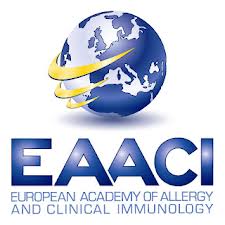ORAL INMUNOTHERAPY WITH PEACH-JUICE IN LIPID TRANSFER PROTEIN (LTP) ALLERGY. IS IT POSSIBLE TO REACH TOLERANCE?

Eladia Alarcón Gallardo1, Ángela Claver Monzón1, Begoña Navarro Gracia1, Elena Botey Faraudo1, Maylen Fariñas1, Mariona Pascal2. Araceli Diaz-Perales3, Anna Cisteró-Bahima1.
1. Servei d´Al·lergia. Hospital Universitari Dexeus. Grupo Quirón Salud. UAB. Barcelona
2. Servicio de Inmunología, CDB, Hospital Clinic. Universitat de Barcelona. Barcelona.
3. E.T.S. de Ingeniero Agrónomos. Departamento de Biotecnología. Universidad Politécnica de Madrid.Introduction:
Food allergy to rosaceae fruits and nuts, due to sensitization to lipid-transfer protein (LTP), is frequent in the Mediterranean countries. Based on milk allergy oral immunotherapy (OIT) protocols, a study is proposed to obtain an OIT regimen in patients allergic to LTP.
Material and methods:
We included patients with anaphylactic reactions due to LTP-food allergy, from January/2015 to October/2016.
Skin prick test (SPT) was performed with a food and inhalant battery, LTP Bial-Aristegui® (0,1mg/ml), prick by prick (PbP) with a specific commercial peach-juice (dilutions to endpoint), and determination of Pru p3 IgE levels (ImmunoCAP).
The presence of Pru p3 protein in the peach-juice, was confirmed by SDS-PAGE and ELISA method, and quantified with anti-Pru p3.
We elaborated an OIT guideline with progressive administration of peach-juice, 1-2-4-5 drops (5drops = 0.13ml), sublingually, starting concentration chosen according to the endpoint SPT results, up to 5ml daily dose. The dose reached at the Allergy Service, was continued at home, daily, for 1-2 weeks. All the increasing doses were performed at the Allergy Service, after PbP with peach-juice and LTP control SPT. After a time, an oral challenge up to 250ml peach-juice was performed. Patients were instructed on the importance of maintaining regular intakes and avoiding cofactors.
Results:
16 patients started this protocol (6 male/10 female), aged 7-38 (media 19,67).
Peach-juice analysis in agarose gel electrophoresis, showed a 10 KDa band quantified as 21.16μg/ml of LTP.
There was no difference between wheal diameter on SPT for LTP Bial-Aristegui® and PbP with commercial peach-juice along all the study. Average concentration on PbP to endpoint: 1/1000 (4), 1/100 (8), 1/10 (4). Pru p 3 IgE level average: 30,22 kU/L.
None anaphylactic or serious reactions during the OIT protocol appeared. Only 5 patients (31%) reported mild occasional symptoms (oral pruritus and mild located urticaria). 11 patients reached 5mL daily dose (68.75%), and 4 of them (25%) completed oral food challenge with peach-juice up to 250mL, with good tolerance.
This pattern also allowed us to reintroduce withdrawn foods from the diet due to previous reactions, with good tolerance.
Conclusions:
Our LTP-OIT protocol is safe and effective, and it could be a new alternative in the management of allergic patients to LTP, improving their quality of life. The regular intake of peach-juice could lead to tolerance to other foods LTP-containing.
